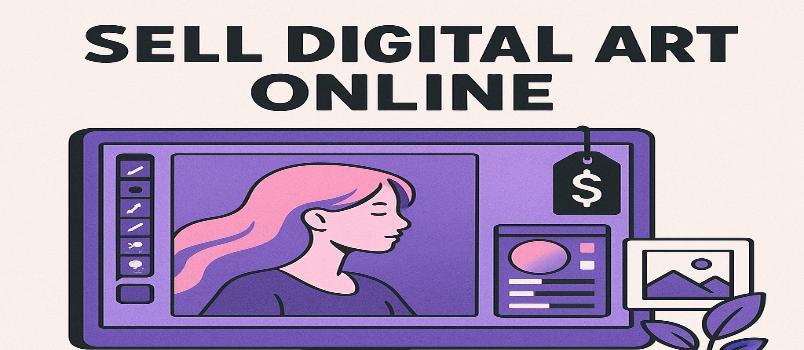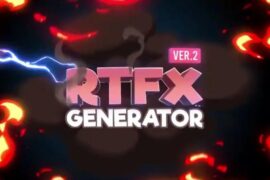The digital art revolution has transformed how artists share and monetize their creativity. Whether you’re a seasoned digital artist or just starting your artistic journey, finding the right platform to showcase and sell digital art online is crucial for success. The online art market has exploded in recent years, offering unprecedented opportunities for artists to reach global audiences without traditional gallery constraints.
This comprehensive guide explores over 35 platforms where you can turn your digital creations into a sustainable income stream. From traditional marketplaces to cutting-edge NFT platforms, we’ve categorized each option to help you find the perfect fit for your artistic style and business goals.
Best Websites To Sell Digital Art Online
Digital Downloads & Marketplace Platforms
These platforms specialize in selling digital art directly to customers, perfect for printable art, digital illustrations, templates, and design assets.
Envato

Envato Elements operates as a subscription-based marketplace where customers pay a monthly fee for unlimited downloads of digital assets. This includes graphics, templates, stock photos, and illustrations created by contributing artists.
Artists can join Envato Elements through an application process and earn money based on the number of times their items are downloaded. The payment structure works on a points system, where artists earn points for each download, and points are converted to cash monthly.
What makes Envato Elements attractive is its massive subscriber base of designers, marketers, and content creators who regularly need fresh digital assets. The platform is particularly good for artists who can produce high-volume, commercially viable graphics, templates, and design elements that appeal to business users.
Etsy

Etsy remains one of the most popular and accessible platforms for selling digital art online. Known primarily for handmade and vintage items, Etsy has become a powerhouse for digital downloads, making it perfect for artists selling printable art, digital illustrations, and design templates.
Setting up shop on Etsy is straightforward and affordable. You can list digital products for just $0.20 per item, and Etsy takes a 6.5% transaction fee when you make a sale. The platform’s built-in audience actively searches for unique digital art, from wall art prints to wedding invitations and social media templates.
What makes Etsy particularly attractive is its search engine optimization. Your digital art can be discovered by millions of users through Etsy’s internal search and even Google searches. The platform also offers robust marketing tools, including promoted listings and social media integration.
Creative Market
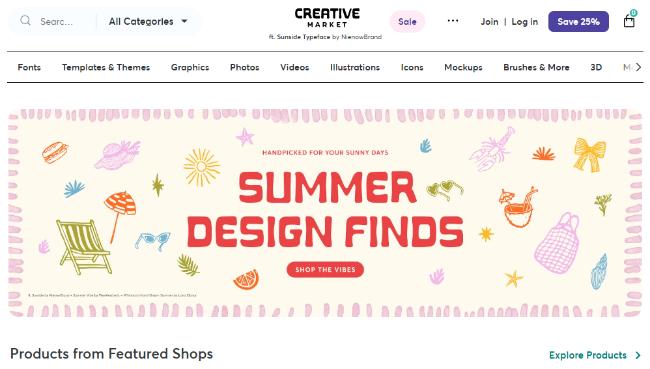
Creative Market caters specifically to professional designers and creative professionals, making it an excellent platform for high-quality digital assets. This marketplace focuses on design resources, including graphics, templates, fonts, and illustrations that other creatives purchase for their projects.
The application process for Creative Market is selective, requiring portfolio submission and approval. However, once accepted, artists typically earn higher profits due to the professional nature of the customer base. The platform offers competitive royalty rates, often ranging from 20% to 70% depending on exclusivity agreements.
Creative Market’s strength lies in its curated approach and professional audience. Customers here are willing to pay premium prices for exceptional quality, making it ideal for established artists with polished portfolios.
Gumroad

Gumroad simplifies the process of selling digital products directly to customers. Originally designed for creators of all types, it has become increasingly popular among digital artists for its user-friendly interface and flexible pricing options.
The platform charges a flat 10% fee on free products and offers a premium plan for $10 monthly with reduced fees. Gumroad excels in its simplicity – you can have a digital art store up and running in minutes. The platform supports various file types and automatically delivers digital products to customers upon purchase.
Gumroad’s strength lies in its marketing tools and analytics. You can create discount codes, track customer behavior, and even build email lists for future marketing campaigns.
ArtPal

ArtPal provides a free platform for artists to create their own online art gallery and sell digital downloads alongside physical prints. The platform doesn’t charge listing fees or monthly subscriptions, making it accessible for emerging artists.
Artists keep 100% of their profits from direct sales, with ArtPal only taking a small percentage when they help facilitate sales through their marketing efforts. The platform provides customizable storefronts and integrated payment processing.
Print-on-Demand Platforms
These services handle printing, shipping, and customer service, allowing you to sell physical products featuring your digital art without inventory management.
Redbubble
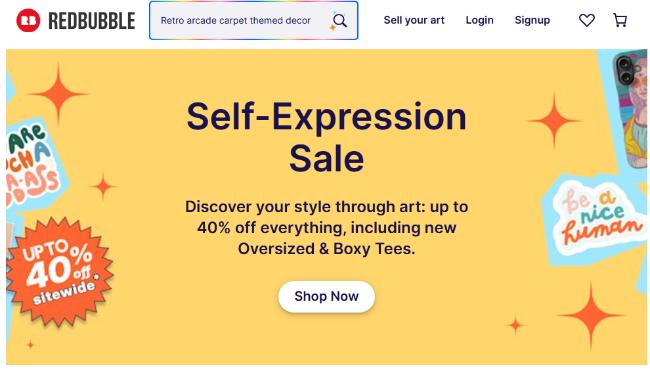
Redbubble stands as one of the most popular print-on-demand platforms for independent artists. The platform offers artists a way to monetize their artwork globally without upfront costs, providing various products from t-shirts and stickers to phone cases and home decor.
Artists upload their designs and earn royalties on each sale, typically ranging from 10-20% depending on the product and markup settings. Redbubble handles all production, shipping, and customer service, making it truly passive income once your designs are uploaded.
The platform’s strength lies in its massive global audience and extensive product catalog. With millions of active users, quality designs can generate consistent sales through organic discovery.
Society6
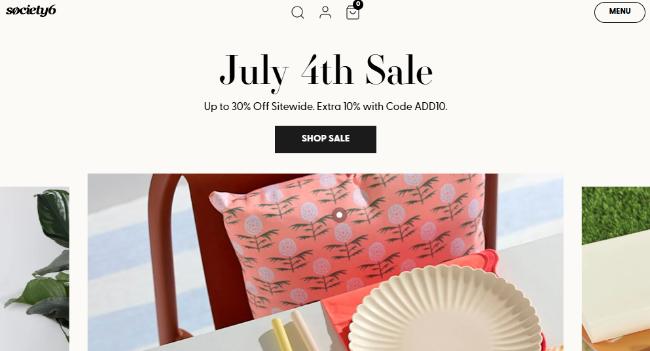
Society6 operates similarly to Redbubble but with a more curated, artistic focus. The platform emphasizes unique, creative designs and has built a community around supporting independent artists.
Artists earn 10% royalties on most products, with higher percentages on art prints. Society6 frequently features artists on their social media and email newsletters, providing additional exposure opportunities for standout work.
The platform is known for its high-quality products and aesthetic presentation, attracting customers willing to pay premium prices for unique artistic items.
TeePublic
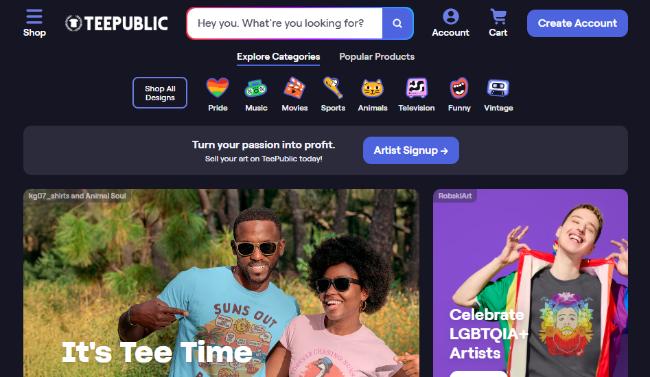
TeePublic focuses primarily on apparel, making it ideal for artists who create designs suitable for t-shirts, hoodies, and accessories. The platform has a strong community of design enthusiasts and collectors.
Artists earn $2 per sale on most products, with occasional bonus periods offering higher payouts. TeePublic’s audience actively searches for trending, pop culture, and niche designs, making it perfect for artists who create timely or reference-based artwork.
Fourthwall
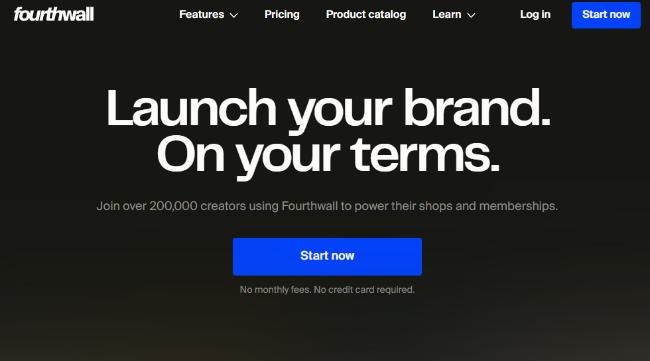
Unlike traditional POD services, Fourthwall acts as an all-in-one eCommerce platform which allows artists to create a professional storefront tailored to their brand with ease. The platform has an impressive product catalog of over 300 items, including high-quality apparel, accessories, home décor, and premium wall art.
Fourthwall offers competitive profit margins and provides comprehensive analytics and marketing tools. The platform is particularly popular among content creators and artists who want more control over their brand presentation.
INPRNT
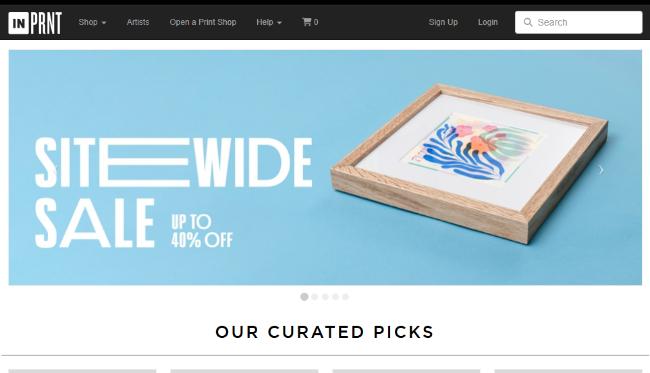
INPRNT is a curated online marketplace where independent artists can sell gallery-quality prints, fulfilled by INPRNT. It’s very popular amongst artists and has a stellar reputation.
The platform focuses exclusively on art prints, offering museum-quality paper and printing standards. Artists earn 50% commission on sales, which is higher than most print-on-demand platforms. However, INPRNT is selective about the artists they accept, maintaining high quality standards.
Printify

Printify operates as a print-on-demand service that integrates with various e-commerce platforms like Shopify, Etsy, and WooCommerce. This allows artists to maintain their own brand while leveraging Printify’s production network.
The platform connects artists with multiple print providers, allowing for competitive pricing and faster shipping times. Artists can set their own profit margins and have more control over pricing strategies.
Printful
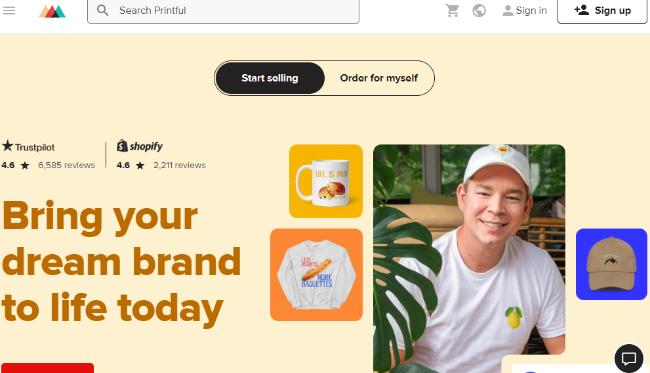
Printful offers premium print-on-demand services with a focus on quality and branding options. The platform provides white-label fulfillment, allowing artists to build their own brand without customers knowing about the middleman.
Printful integrates with major e-commerce platforms and offers advanced features like mockup generators and branding services. While their base prices are higher than some competitors, the quality and service level justify the premium.
Amazon Merch on Demand
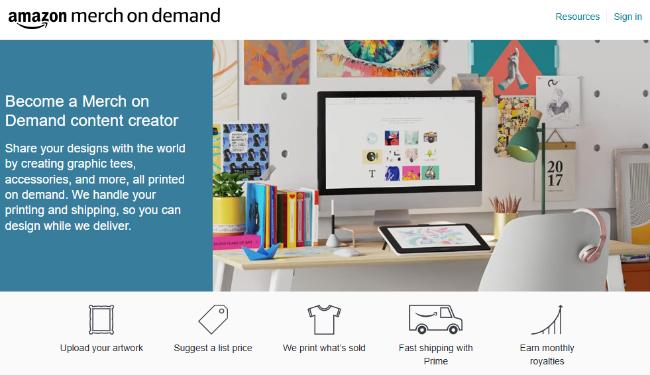
Amazon Merch on Demand offers artists access to Amazon’s massive customer base. You can sign up for free and pay only for what you sell.
The platform operates on an invitation-only basis, requiring artists to apply and wait for acceptance. Once approved, artists can upload designs for t-shirts and other apparel, earning royalties on each sale through Amazon’s marketplace.
Amazon’s global reach and trusted shopping platform make it attractive for artists, though competition is fierce and approval can take months.
Stock Photography & Vector Platforms
These platforms cater to businesses and designers looking for commercial-use graphics, illustrations, and vector art.
Shutterstock
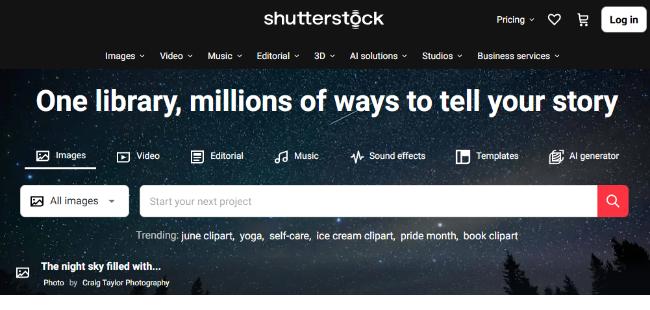
Shutterstock operates as a stock content marketplace where businesses and individuals purchase digital assets for their projects. As a contributor, you can upload digital illustrations, vectors, and other artwork to earn royalties whenever someone downloads your content.
The earning potential depends on your portfolio size and download volume. Contributors earn between 15% to 40% royalties per download, with rates increasing based on lifetime earnings. Making money from stock illustrations correlates with sales volume.
Success on Shutterstock requires understanding market demand and creating commercially viable artwork. The platform provides insights into trending topics and popular search terms.
Adobe Stock
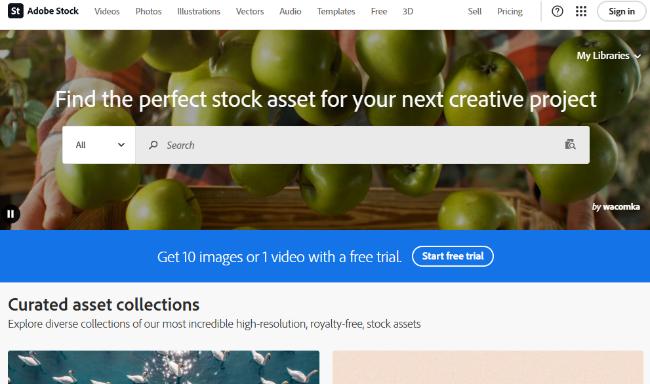
Adobe Stock serves the massive creative professional market, making it an excellent platform for digital artists creating commercial-use artwork. The platform integrates seamlessly with Adobe’s Creative Suite, making it convenient for designers to purchase and use digital assets.
Contributors earn royalties ranging from 20% to 60% based on their contributor level and exclusivity agreements. The platform accepts various digital art formats, including illustrations, vectors, templates, and 3D renders.
Adobe Stock’s integration with popular design software gives it a significant advantage. Many professional designers discover and purchase artwork directly through applications like Photoshop and Illustrator.
VectorStock
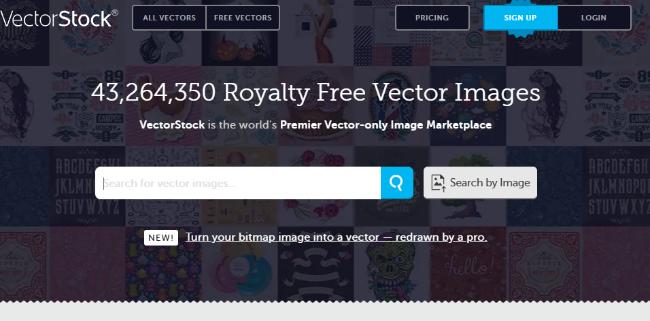
VectorStock is a site dedicated to Vector graphics, designed for Vector Artists and designers. Users can quickly search their vector collection, avoiding the hassle of sifting through millions of photos in search of the vector graphic they need.
The platform focuses exclusively on vector graphics, making it ideal for artists who specialize in scalable illustrations, logos, and graphic design elements. VectorStock offers competitive royalty rates and has a streamlined interface designed specifically for vector artists.
iStock
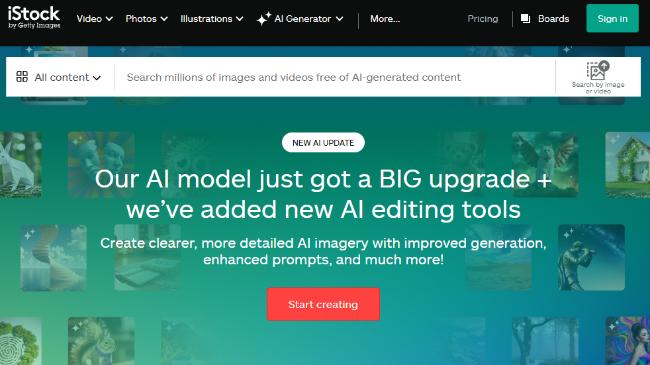
iStock, owned by Getty Images, represents one of the most established stock photography platforms that also accepts illustrations and vector graphics. The platform has a rigorous quality control process but offers access to premium clients willing to pay higher prices.
Contributors can earn between 15% to 45% royalties depending on their exclusivity status and portfolio performance. iStock’s client base includes major corporations and advertising agencies, potentially leading to higher-value sales.
123RF
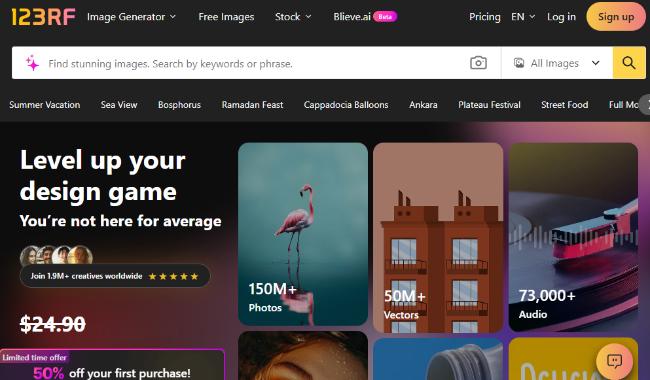
123RF offers a global marketplace for stock photos, vectors, and illustrations. The platform is known for competitive royalty rates and a straightforward submission process.
Artists can earn up to 60% commission on sales, with rates increasing based on exclusivity agreements and sales performance. The platform serves clients worldwide and accepts content in multiple languages.
Dreamstime
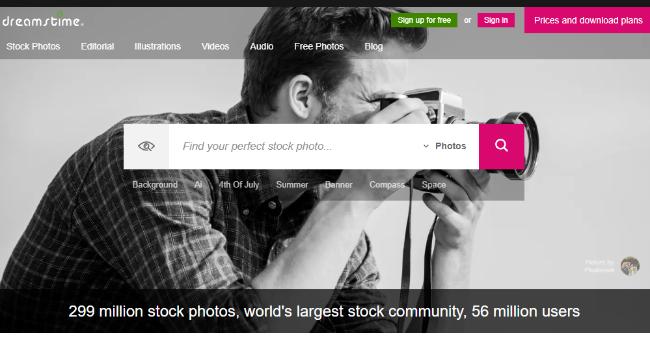
Dreamstime provides a platform for selling stock photos, illustrations, and vector graphics with competitive commission rates. The platform offers both subscription and credit-based purchasing options for customers.
Contributors can earn between 25% to 50% royalties on sales, with performance bonuses available for top contributors. Dreamstime also offers exclusive content opportunities for higher earnings.
Portfolio & Professional Platforms
These platforms primarily serve as portfolio showcases but also offer selling opportunities and professional networking.
ArtStation
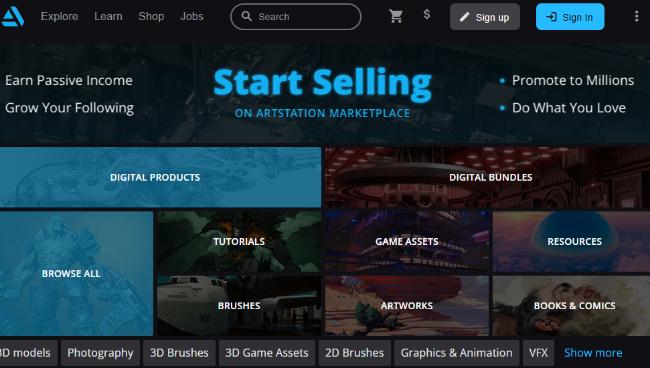
ArtStation is the leading showcase platform for games, film, media & entertainment artists. While primarily known as a portfolio platform, ArtStation also features a marketplace where artists can sell digital assets, tutorials, and prints.
The platform is industry-standard for concept artists, game developers, and entertainment industry professionals. Because you can easily make a professional looking portfolio on ArtStation, lots of digital artists use it as the primary place to host their best art.
ArtStation’s marketplace allows artists to sell 3D models, brushes, tutorials, and other digital assets to fellow professionals, creating additional revenue streams beyond client work.
DeviantArt
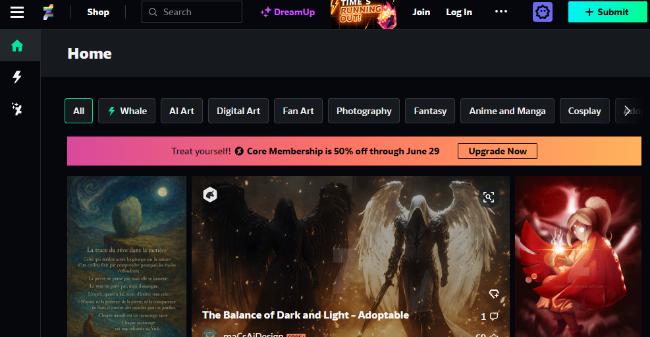
DeviantArt is where art and community thrive, with over 350 million pieces of art while connecting to fellow artists and art enthusiasts. The platform has evolved from a simple gallery to include print-on-demand services and commission opportunities.
DeviantArt offers integrated print sales through their partnership with various print providers. Artists can also receive commissions directly through the platform’s commission system.
The platform’s massive community and long-established presence make it valuable for building an audience and connecting with other artists, even if direct sales may be lower than specialized marketplaces.
Behance
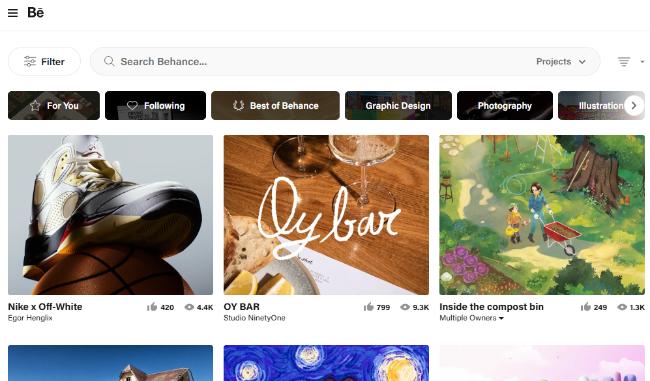
While primarily known as a portfolio platform, Behance has evolved to include opportunities for artists to sell their work and connect with potential clients. Owned by Adobe, it integrates well with other Adobe services.
Behance allows artists to showcase their digital art portfolios and connect with potential buyers, clients, and collaborators. The platform’s strength lies in its professional network and search visibility.
Many art directors, creative agencies, and potential clients discover artists through Behance, making it an essential tool for building a digital art career and generating commission work.
Traditional Art Market Platforms
These platforms bring traditional art market experiences to the digital realm, often focusing on fine art and collector audiences.
Fine Art America
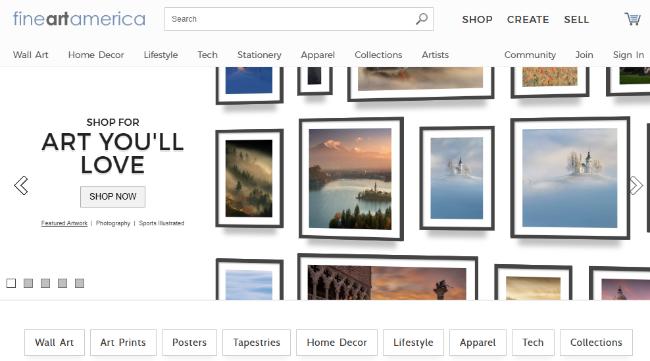
Fine Art America stands as one of the world’s largest online art marketplaces, serving both digital and traditional artists since 2006. The platform has evolved into a comprehensive ecosystem where artists can sell original digital art, prints, and merchandise.
What sets Fine Art America apart is its print-on-demand service. Artists can upload their digital art, and the platform handles printing, shipping, and customer service when someone purchases a physical print.
The platform operates on a commission-based model, with artists keeping a base markup on all sales. You can set your own prices and profit margins, giving you complete control over your earnings.
Saatchi Art

Saatchi Art has expanded beyond traditional art to include digital works, offering artists access to a global collector base. The platform emphasizes artist discovery and career development.
The platform offers both physical and digital art sales, with competitive commission structures and marketing support. Saatchi Art’s curatorial team actively promotes featured artists through various channels.
What sets Saatchi Art apart is its focus on artist development and career support, providing resources and opportunities that go beyond simple marketplace functionality.
Artfinder

Artfinder connects artists directly with art buyers, focusing on original and limited-edition artworks. The platform has expanded to include digital art and prints alongside traditional media.
Artists keep 70% of the sale price, with Artfinder taking a 30% commission. The platform provides marketing support and features artists in various promotional campaigns.
Artfinder’s strength lies in its focus on original, authentic artwork and its efforts to build relationships between artists and collectors.
Singulart

Singulart operates as a curated online gallery featuring emerging and established artists. The platform focuses on contemporary art and has expanded to include digital works.
Artists undergo a selection process before being accepted to sell on the platform. Once accepted, they receive support from dedicated art advisors and benefit from Singulart’s marketing efforts.
The platform targets serious art collectors and offers both original artworks and limited edition prints, including digital art prints.
Specialized Niche Platforms
These platforms cater to specific types of digital art or particular audiences.
Displate

Displate specializes in metal poster prints, creating a unique niche for digital artists. Artists can submit designs that are printed on metal and sold as premium wall art.
The platform focuses on pop culture, gaming, movies, and artistic designs that appeal to collectors and enthusiasts. Artists earn royalties on each sale, with rates varying based on exclusivity and performance.
Displate’s unique product offering and targeted audience make it attractive for artists creating designs that work well on metal surfaces.
Threadless

Threadless operates on a community-driven model where designs are submitted, voted on by the community, and selected for production. This creates a democratic approach to design selection.
Artists submit designs through design challenges and community voting. Selected designs are produced and sold, with artists earning royalties and prizes.
The platform’s community aspect and regular design challenges create engagement opportunities beyond simple sales transactions.
Zazzle

Zazzle offers extensive customization options, allowing customers to personalize products with artists’ designs. This creates unique selling opportunities for adaptable artwork.
Artists can create designs that customers can modify, adding text, changing colors, or combining with other elements. This customization aspect can lead to higher customer satisfaction and repeat sales.
The platform offers a wide range of products and competitive royalty rates, making it attractive for artists who create versatile designs.
Emerging & Alternative Platforms
These newer or alternative platforms offer unique approaches to digital art sales.
Artgram

Artgram (ex Arrrt.io) is a new platform for artists, promising to protect their rights and work from misuse, unlike other platforms. It is the one that looks and feel the most like Artstation.
The platform focuses on artist rights and protection while providing a professional showcase environment. It’s gaining popularity among artists looking for alternatives to established platforms.
Artmajeur

Artmajeur provides a global platform for artists to sell original artworks, prints, and digital art. The platform emphasizes direct artist-to-collector relationships.
Artists can create free galleries and sell their work with competitive commission rates. The platform provides marketing tools and features artists in various promotional campaigns.
Artplode

Artplode focuses on connecting artists with art lovers through social features and marketplace functionality. The platform combines social networking with art sales.
Artists can build followings, engage with fans, and sell their artwork through integrated e-commerce tools. The social aspect helps build relationships that can lead to sales and commissions.
Conclusion
The landscape of digital art sales continues to evolve rapidly, with new platforms and opportunities emerging regularly. Success in selling digital art online requires understanding your audience, choosing the right platforms for your art style and career goals, and consistently producing quality work.
Consider diversifying across multiple platforms to maximize your reach and income potential. While NFT marketplaces have created exciting new opportunities, traditional platforms like Etsy and print-on-demand services continue to provide stable income streams for many artists.
The key categories to consider are:
For Beginners: Start with Etsy, Redbubble, and Society6 for easy entry and learning opportunities.
For Professional Artists: Focus on Creative Market, Adobe Stock, and ArtStation for higher-value sales to professional clients.
For Fine Artists: Consider Saatchi Art, Fine Art America, and curated NFT platforms like SuperRare.
For Passive Income: Explore stock platforms like Shutterstock, print-on-demand services, and multiple marketplace presence.
For Innovation: Experiment with NFT platforms like OpenSea, programmable art on Async Art, and emerging platforms.
Remember that building a successful digital art business takes time, patience, and persistence. Focus on creating exceptional work, understanding your target market, and building genuine connections with your audience. The digital art market offers unprecedented opportunities for artists willing to embrace technology and adapt to changing trends.
Whether you choose traditional marketplaces, cutting-edge NFT platforms, or a combination of both, the key is to start creating, sharing, and selling your digital art. The tools and platforms are available – now it’s time to turn your creativity into a thriving online business.

